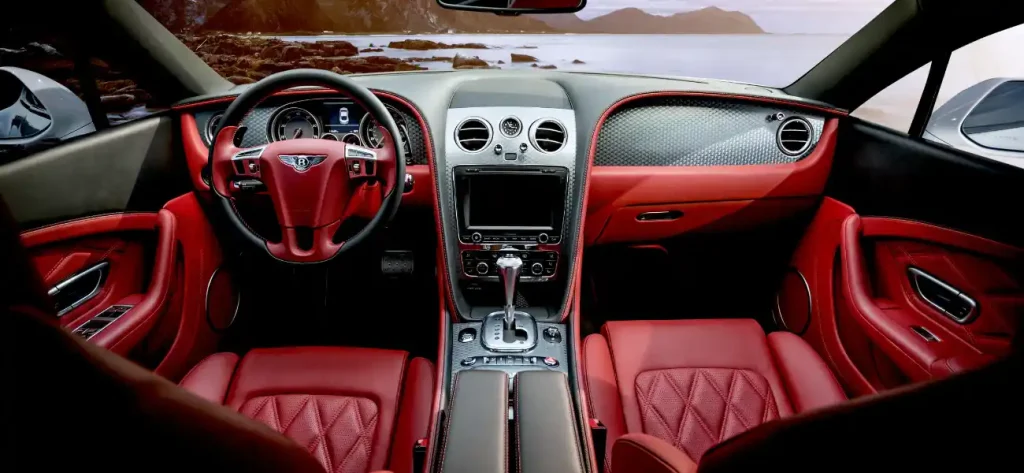Complete car detailing is like giving your car a super-duper, head-to-toe spa day! It’s much more than just a quick trip through the car wash. A detailer cleans every single tiny spot on your car, both the outside and the inside, so it looks shiny and new, just like when it first left the factory.
How detailing is done is an important factor that every auto owner wants to know for their vehicle’s good condition.
This blog post provides an in-depth look at the role of a detailer for any vehicles in Busy life of Downtown Toronto.
What is Complete Car Detailing In Downtown Toronto?
Complete car detailing means giving your car a full deep cleaning and care, both inside and outside. It is more than just a normal car wash.
In car detailing, experts clean every small part of the car — like the wheels, tires, windows, seats, dashboard, and paint — to make it look brand new again.
They use special products and tools such as car shampoo, wax, clay bar, and polish to remove dirt, scratches, and stains. The outside of the car becomes shiny, and the inside smells fresh and clean.
Some detailers also use ceramic coating or paint protection film (PPF) to keep the paint safe from sun and dust. Complete car spa helps your car stay beautiful, protects the paint, and makes it last longer. It’s like giving your car a spa day!
Important Steps in the Car Detailing Process?
The process of car detailing is very important; missing one step may lead it to the wrong way, which not only hurts the vehicle but also makes detailing wrong.
Stage 1: Wheels and Tires Cleaning
Imagine your car’s wheels and tires are wearing the dirtiest shoes! This is why professional detailers always clean them first. They get covered in nasty things like brake dust (which is tiny, black, and sticky metal powder) and road grime.
- The Job: A detailer uses a special, strong, but safe wheel cleaner liquid to melt away the brake dust. They use different kinds of brushes—some soft for the shiny wheel face and some stiff for the bumpy tire rubber—to scrub every part.
- The Goal: To get rid of all that black grime and prevent the wheels from scratching the main car paint when they rinse it all off.

Stage 2: Exterior Pre-Wash and Wash
This step is like showering your car to get the big, loose mud and dirt off before you even touch the paint with a sponge! This is super important because if you rub a dirty car, the dirt acts like sandpaper and creates tiny scratches called swirl marks.
- Rinsing: First, a strong jet of water (pressure washer) knocks off the easy-to-remove dirt.
- Pre-Wash/Snow Foam: Next, they spray a thick, soapy foam (like shaving cream for the car) called snow foam all over. This foam sits on the car for a few minutes and gently pulls even more dirt off the paint.
- Hand Wash: Finally, they use super-soft microfiber wash mitts and a special car soap (usually with the two-bucket method—one bucket for soap, one for rinsing the dirty mitt) to wash the car gently from top to bottom, making sure to rinse often.
- The Goal: To remove as much surface dirt as possible safely, protecting the clear, shiny coat of paint.
Stage 3: Decontamination
Your car paint might look clean after washing, but tiny, rough bits you can’t see or feel are stuck to it! These are things like industrial pollution, tree sap, and leftover specks of iron. We need to get rid of them so the paint is perfectly smooth before polishing.
- Iron Remover: A special chemical spray is used that turns purple when it touches iron bits (like the tiny bits of brake dust stuck to the paint!). This shows you where the dirt is, and the chemical dissolves it.
- Clay Bar Treatment: A clay bar (which feels like firm play-doh) is rubbed across the wet paint with a lubricant spray. The clay safely picks up and traps all the invisible rough bits, leaving the paint feeling as smooth as glass.
- The Goal: To make the car’s surface absolutely, perfectly smooth for the next steps, like polishing and waxing.
Stage 4: Paint Correction (Polishing)
This is where the car gets its deep, mirror-like shine back! Even though a car is washed, it still has tiny scratches, called swirl marks, that look like spiderwebs in the sun. Polishing is the way to smooth these out.
- The Job: Detailers use a special machine called a polisher (like a soft sander) with soft polishing pads and a creamy polish liquid. The polish has super-tiny, gentle scrubbing bits that slowly and safely smooth down the clear top layer of the paint, making those little scratches disappear.
- The Goal: To make the paint perfectly flat and smooth, so light reflects evenly. When this happens, the color looks much deeper, brighter, and incredibly shiny—like a true mirror!
- Optional: This step can sometimes be skipped if the car’s paint is new or already in great condition.
Stage 5: Exterior Protection (Waxing or Sealing) 🛡️
After all the hard work to make the paint perfect, you need to protect it! This step is like putting a clear, invisible superhero shield over the paint to guard it from the bad guys: rain, bird droppings, tree sap, and the strong sun.
- The Job: The detailer applies a layer of car wax (which can be a natural substance called carnauba) or a synthetic sealant (which is made by people to last longer) onto the paint. This layer is very thin and makes the surface super slippery (hydrophobic).
- The Goal: The protective layer keeps the harsh stuff from directly touching and damaging the paint. It also makes the car stay cleaner for longer because dirt and water slide right off (water beading).

Stage 6: Glass and Trim Detailing 🪟
A perfect paint job can look dull if the glass and plastic parts are ignored. This stage focuses on those final pieces to make the whole car look finished.
- Glass Cleaning: Downtown Auto Detailers use special glass cleaner and a clean microfiber towel to clean all the windows and mirrors, inside and out. They are careful not to leave any blurry lines or streaks so the driver can see clearly.
- Trim Restoration: The black plastic or rubber parts (trim) around the windows, doors, and bumpers can fade and turn gray from the sun. The detailer applies a trim restorer or dressing to make these parts look dark, rich, and new again.
The Goal: To ensure crystal-clear visibility for safety and to restore the dark, new look of all the plastic and rubber parts, which adds a final touch of shine to the exterior.
Stage 7: Interior Trash Removal and Vacuuming 🗑️🧹
The inside of a car often has crumbs, wrappers, and dirt everywhere, so this is the starting point for interior detailing.
- The Job: First, all the obvious trash and clutter (like toys, snack bags, and empty water bottles) must be taken out. Next, the detailer uses a powerful vacuum cleaner with special small nozzle attachments. They vacuum the seats, floor carpets, and the trunk, making sure to get into all the tiny cracks and hard-to-reach spots, like under the seats and inside the cup holders (which are usually very sticky!).
- The Goal: To remove all the loose dirt, sand, crumbs, and debris so the detailer can start the deep cleaning on the surfaces themselves. They often take out the floor mats to shake them out and vacuum the floor underneath first!
Stage 8: Carpet and Upholstery Deep Cleaning 🛋️💦
After vacuuming, the fabric parts of the car often need extra cleaning because they get stained from spills like juice, coffee, or mud.
- The Job: For fabric seats and carpets (upholstery), a detailer sprays a special stain remover or fabric cleaner onto the dirty spots. They use a scrub brush (sometimes powered by a drill!) to gently work the cleaner deep into the fabric fibers. Then, they use a machine called a carpet extractor or a steam cleaner. This machine is like a special vacuum that sprays hot water and instantly sucks it—and the melted-away dirt—right back out, leaving the fabric clean and almost dry.
- The Goal: To get rid of old, set-in stains and remove trapped dirt and bacteria so the fabric looks, feels, and smells fresh and clean.
Stage 9: Surface Wiping and Conditioning 🧴✨
This is the step where all the hard parts inside the car get cleaned and protected.
- The Job: A detailer takes a clean microfiber cloth and a gentle interior cleaner spray to wipe down every hard surface. This includes the dashboard, the center console, door panels, and even the steering wheel and buttons (which collect a lot of germs!). For cars with leather seats, they use a special leather cleaner to get them clean, followed by a leather conditioner. The conditioner is like lotion for the leather, keeping it soft and stopping it from cracking in the sun.
- The Goal: To remove all the sticky residue, dust, and grime from the hard plastic surfaces and keep the materials protected from the Sun’s powerful UV rays.
Stage 10: Final Touches and Engine Bay 🔧🌟
These are the last few steps that make the car truly complete and ready to show off!
- The Job (Tires/Rims): They put a special shiny gel called tire dressing onto the clean tire rubber to make them look dark and new.
- The Job (Engine): For a complete detail, some detailers even clean the engine bay! They use a strong degreaser (a cleaner that removes grease and oil) to wash the engine, and then apply a protective dressing to the hoses and plastic parts.
- The Job (Finishing): Finally, they double-check everything, make sure the windows are sparkling clean and streak-free, put the clean floor mats back, and sometimes add a nice-smelling air freshener to make the car smell amazing!
- The Goal: To complete all the details, ensure everything is protected, and leave the car in “like-new” condition, inside and out.
Conclusion: The Complete Detailing Journey
Complete car detailing in Downtown Toronto is an extensive, step-by-step process that transforms a vehicle inside and out, making it look and feel brand new. It starts outside by deep-cleaning the wheels and using a pre-wash to safely remove loose dirt. The paint is then carefully washed, decontaminated using a clay bar, and often polished to remove tiny scratches and create a deep, glossy shine.
FAQs Car Detailing Process
Why should I detail my car?
How long does it take to detail my car?
How often should I detail my car?
What supplies do you need to detail a car?
Exterior: Car-safe soap (pH-neutral shampoo), microfiber wash mitts, drying towels, a clay bar and lubricant, wax or sealant, and wheel cleaner.
Interior: A powerful vacuum cleaner with attachments, an interior cleaner for surfaces (like the dashboard), upholstery cleaner for fabrics, and clean microfiber cloths.
Tools: A garden hose or pressure washer, and often a polisher machine (for paint correction).








